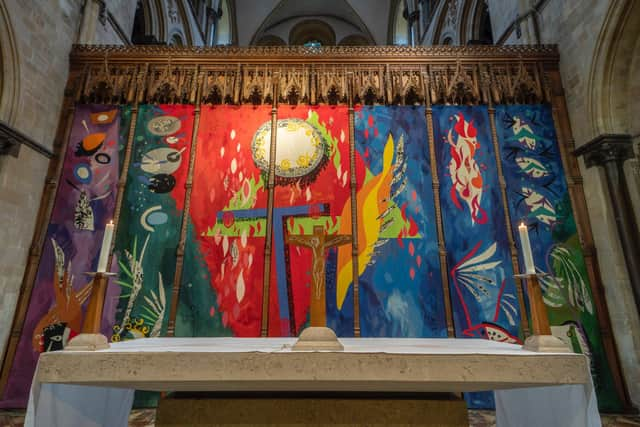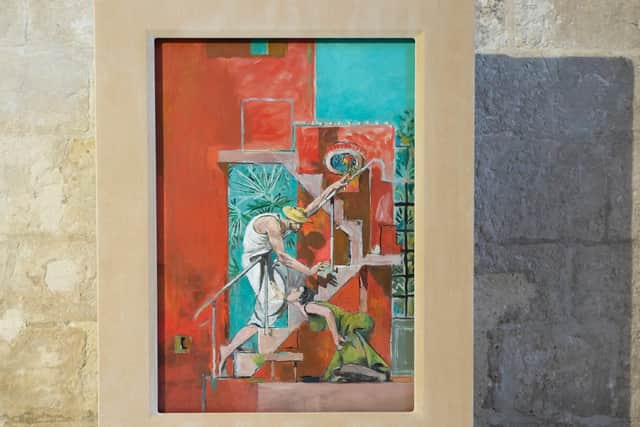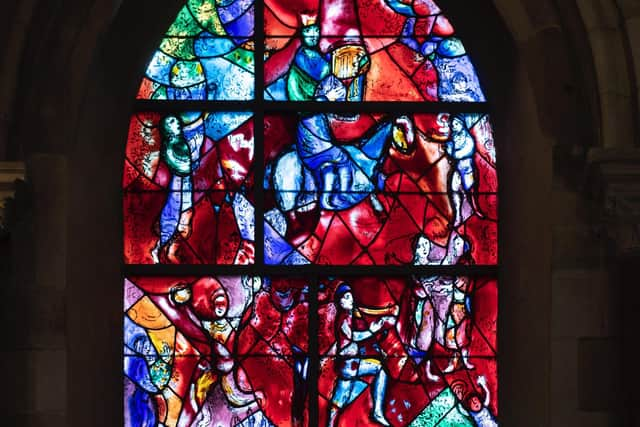Chichester Cathedral: Acclaimed and renowned artists in the history of Chichester Cathedral
and live on Freeview channel 276
The first notable figure is that of architect Christopher Wren, the designer of St Paul’s Cathedral, London. In 1684, ten years before the completion of St Paul’s, Wren repaired the unstable steeple by building an ingenious pendulum to counteract and protect the steeple from south and south-westerly gales.
The next renowned figure with links to the Cathedral is John Hardman. He was one of the world’s leading manufacturers of stained glass at the time and is considered an important figure in the Gothic Revival.
Advertisement
Hide AdAdvertisement
Hide AdIn 1862 Hardman installed the western window in The Chapel of St George, depicting the Acts of St Paul, designed by Augustus Pugin, who is regarded as another major architect and designer of the 1800s’ Gothic Revival.


Additionally, the Cathedral has been a source of inspiration for many major artists. Both JMW Turner and John Constable created paintings of the Cathedral in the 19th century, both of which were commissioned by George Wyndham, the 3rd Earl of Egremont, who they both visited at his residence in Petworth House.
The Turner painting Chichester Canal was painted between 1827 and 1831 and features the Cathedral in the distance beyond the canal. Notably, the painting has a yellow shade to it, a result of how in 1815 a volcanic eruption in Indonesia created a veil of sulfate aerosol that covered the stratosphere around much of the globe, including over Europe.
The Constable painting was completed in 1834 and was part of a series of Constable works which featured Sussex landmarks, including Cowdray House and Arundel Castle. These paintings are displayed, respectively, by the Tate and at the Victoria and Albert Museum.
Advertisement
Hide AdAdvertisement
Hide AdIn the mid-20th century, church authorities were faced with the rise of seemingly alien and surreal modern art, as romantic art became unfashionable, leading to a new renaissance in Church art. This was brought to Chichester through the personalities of Bishop George Bell, who believed modern art should be a core part of modern life, and Dean Walter Hussey, who took up his position in 1955 and was known for working with controversial and avant-garde artists.


After initially considering commissioning a sculpture of the Lord and Mary Magdalene by acclaimed abstract artist Barbara Hepworth, they instead commissioned a painting by Graham Sutherland, later famous for creating a portrait of Winston Churchill which the man himself disapproved of, to add colour to the Cathedral in 1957.
The painting, Noli Me Tangere, was completed in 1960, depicting Jesus being recognised after his resurrection. The painting proved somewhat controversial, since a local resident, Mabel Winifred Norris, attempted to deface the work with a biro pen.
In regards to the incident, she is quoted as saying: “This picture fills me with loathing…this is a cathedral that belongs to the people.”
Advertisement
Hide AdAdvertisement
Hide AdDuring the early 1960s, influential art historian and BBC TV presenter Sir Kenneth Clark acted as an adviser and publicity agent for the redesign of the cathedral, with Welsh artists being commissioned to create new Copes (liturgical vestments or cloaks worn by Roman Catholic and Anglican clergy) in a more avant-garde style at Clark’s suggestion.


The Dean then commissioned a tapestry by John Piper at the recommendation of renowned sculptor Henry Moore to hang behind the High Altar. The work was finished in 1966, standing five metres high and one metre wide.
The tapestry depicts the Holy Trinity through a series of abstract shapes, a green triangle representing indivisibility, along with a white disc as God, a purple cross for the Son and a feathered flame for the Holy Spirit.
In 1975, the Dean commissioned a colourful stained glass window from Marc Chagall, one of the most distinctive Russian modernist artists. This was completed in the North Choir Isle in 1978 and depicts instruments mentioned in Psalm 50, such as the harp, organs and symbols.
Advertisement
Hide AdAdvertisement
Hide AdThe cathedral continues to commission and exhibit inspiring pieces of modern art, taking inspiration from a variety of different topics in a rolling programme of temporary exhibitions throughout the year.


From October 25 to November 14, the Cathedral is hosting Luke Jerram’s The Museum of the Moon, a fusion of lunar imagery and surround sound composition by award winning Bristol-based composer Dan Jones. You can find our more by visiting the Chichester Cathedral website.